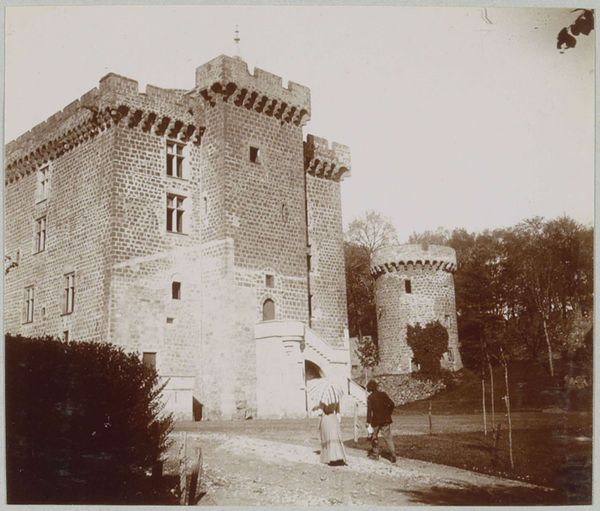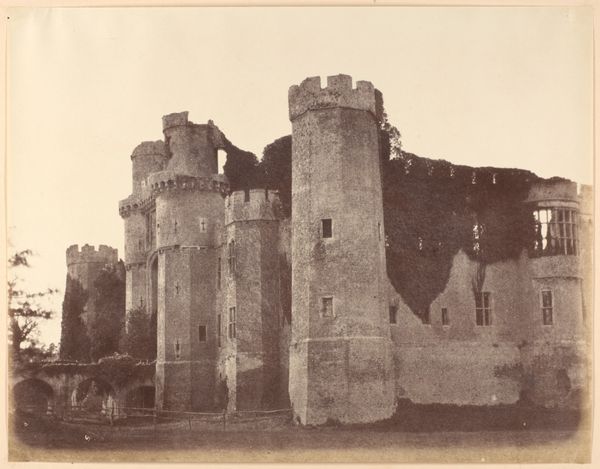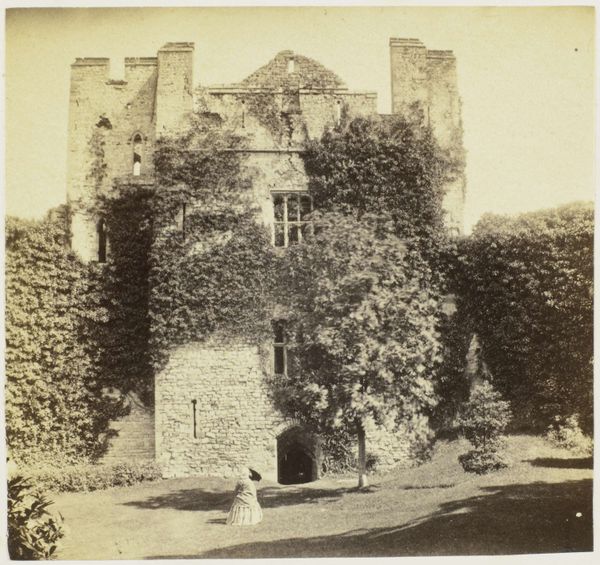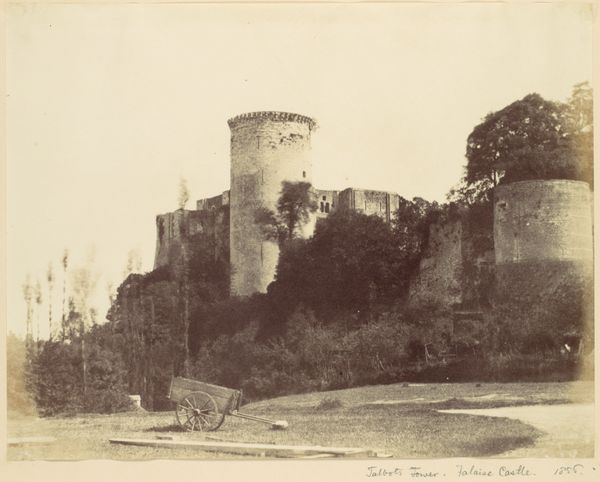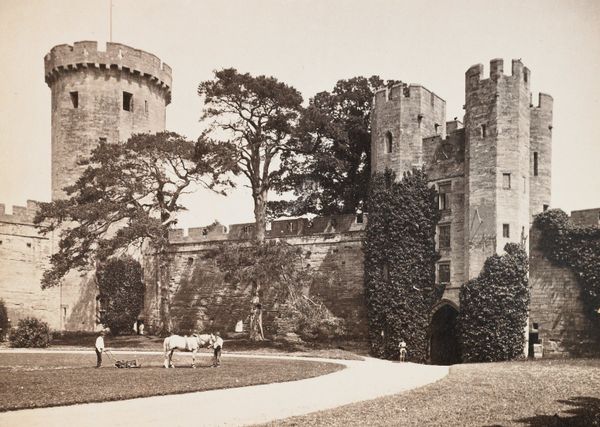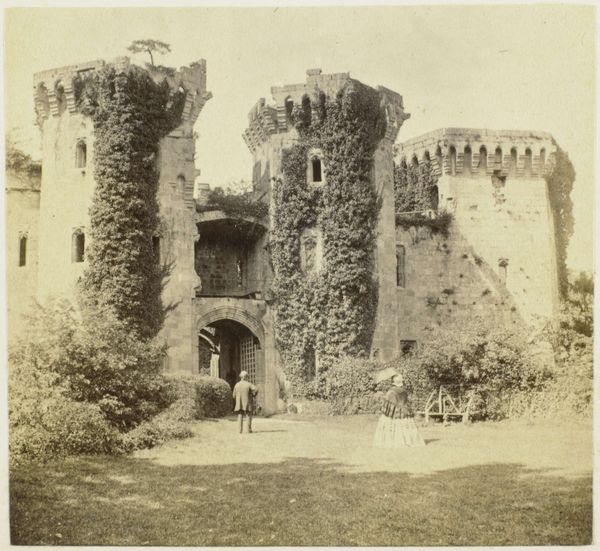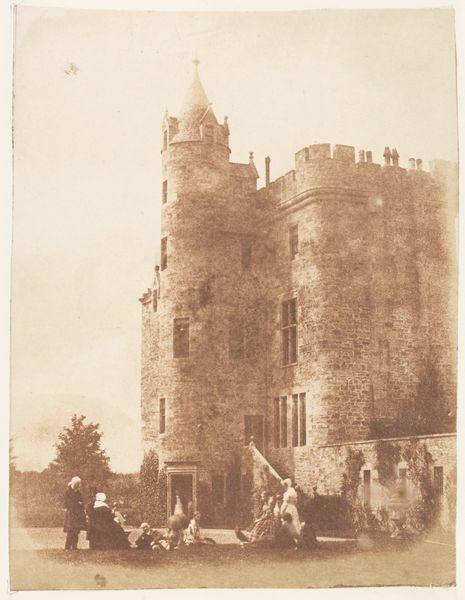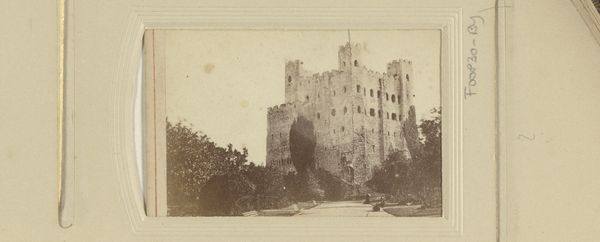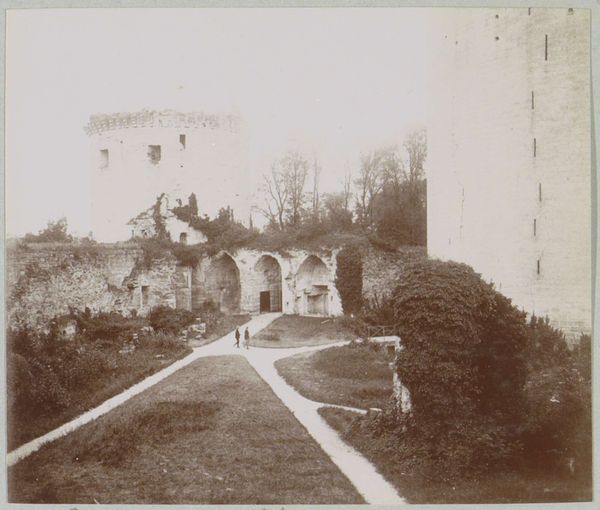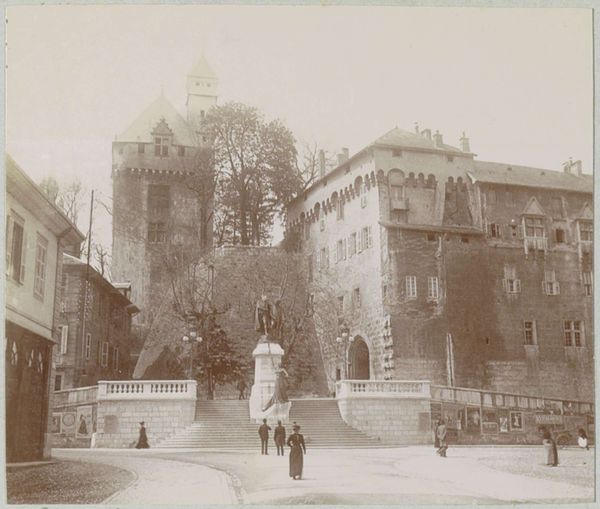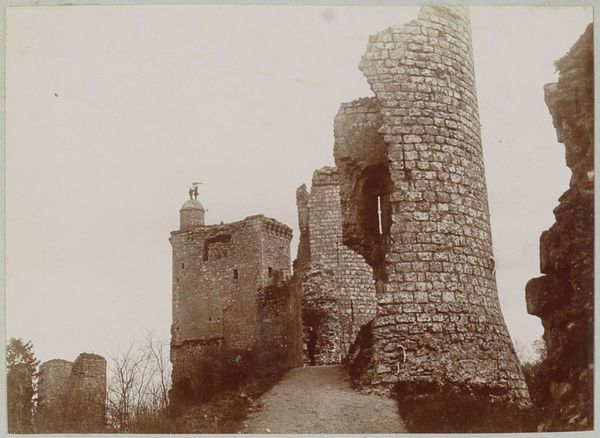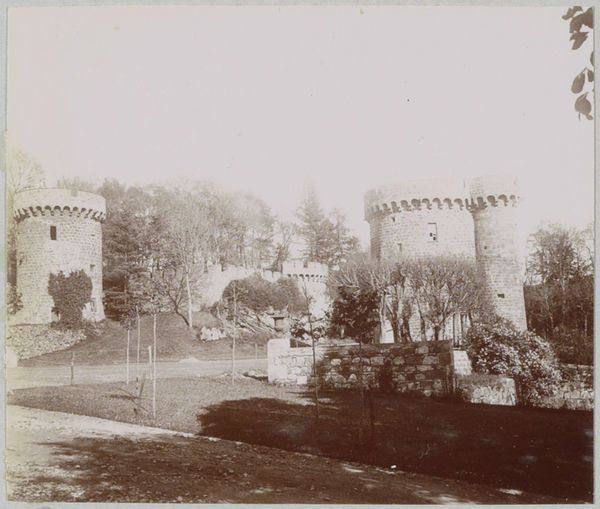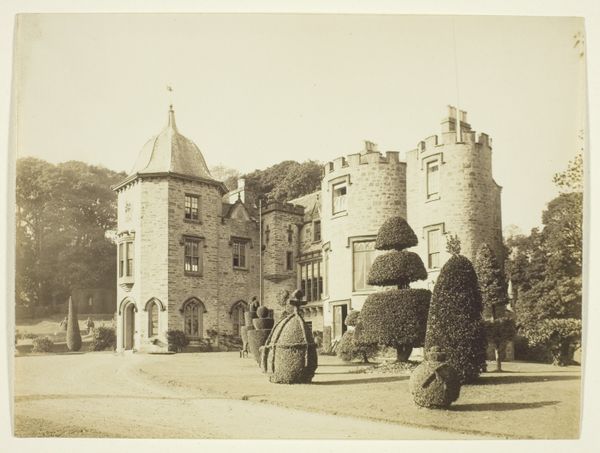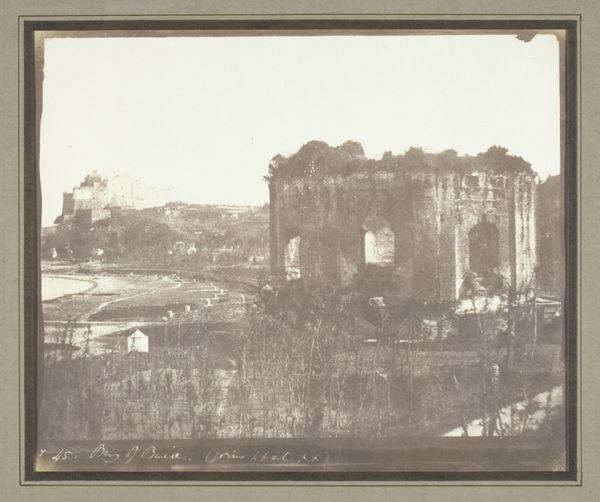
Dimensions: height 70 mm, width 82 mm
Copyright: Rijks Museum: Open Domain
Editor: Here we have "Donjon van het Château-Dauphin in Pontgibaud," a 1902 photograph from Delizy. The image gives off a distinct sense of old-world grandeur and solidity. I'm curious, how do you interpret this work beyond its obvious subject matter? Curator: The image immediately brings to mind the societal structures reinforced by such architecture. This isn't just a picture of a castle; it's a document of power and hierarchy solidified in stone. Consider, who lived here and who was excluded? How does this structure symbolize the control exerted over the surrounding landscape and its inhabitants? Editor: That's a compelling way to look at it! It hadn’t occurred to me to consider the power dynamics embedded in the castle's presence. Curator: Photography at the time also served to reinforce these power structures. The act of documenting these sites allowed for a certain romanticizing and legitimization of feudal power in the modern era. Who had access to photography, and whose stories were being told through it? Editor: So, you are suggesting we consider who is behind the camera, their intentions, and the historical moment? Curator: Precisely. Delizy’s photograph can be read as an aestheticizing of a very particular social order. Considering Romanticism, how does it potentially gloss over historical oppression and reinforce notions of national identity tied to a selective past? How can we, as viewers, be critical of the nostalgia such images might evoke? Editor: This makes me think about how art, even seemingly straightforward landscape photography, is never neutral; it is always entangled with socio-political narratives. Curator: Exactly! By interrogating those narratives, we gain a deeper understanding, not just of art history, but also of our present. Editor: I’ll definitely look at landscape photography differently now. Thank you!
Comments
No comments
Be the first to comment and join the conversation on the ultimate creative platform.
